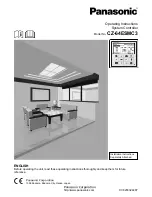
Phoenix Mecano Komponenten AG
19
7.5 Assambly
After the receipt of the electric cylinder, check the device for any damage. The electric cylinder is delivered ready for operation without a
controller.
The installation of the LD1000E consists in fixing the electric cylinder using the rear and front suspensions. (here, note your special
suspension variants; see 6.3.1 “Variants of suspension“)
The cross bores of both suspensions measure 12.1 ± 0.1 mm according to the standard. The fastening bolts are not included in the scope
of delivery.
The following instructions must be observed during installation:
Stroke end positions are set with the pushrod. The pushrod is not secured against twisting. This means that a turning (rotation) of the
pushrod - or the fixed swivel head - is equal to an adjustment of the end positions!
Attention: The attachment points for installation of the electric cylinder must be aligned flawlessly to ensure the safe and flawless operation!
Action of lateral forces on the pushrod must be excluded!
•
When a swivel head or clevis is used/assembled, the head must be correctly locked using the lock nut supplied.
•
A test or trial run must be performed.
Non-compliance with this procedure will cause damage to the electric cylinder!
This nullifies the guarantee!
The installation positions of the components must ensure that pinch and shear points are avoided, particularly
taking into consideration any future applications.
Take care to prevent tripping hazards by proper and safe laying of the supply lines /
cables!
It is very important to ensure that the mounted electric cylinder can move freely in the attachment points / that
the electric cylinder is neither strained nor buckled. Improper assembly and any emergency situation associated
with it would damage the drive and prevent it from operating smoothly!
•
The assembly bolts or fastening screws (no shoulder set screws) must be available in the correct size (pay
attention to the hole diameter of the cylinder uptakes).
•
The bolts and nuts must be manufactured of high-quality steel (for example, 10.8). There may not be any
threads on the nuts in the rear uptake nor at the piston rod eye.
•
The screws and nuts must be tightened tight enough that they cannot come loose.
•
However, do not use too high a torque on the screws in the rear uptake since otherwise the uptakes will be
unnecessarily strained.
















































